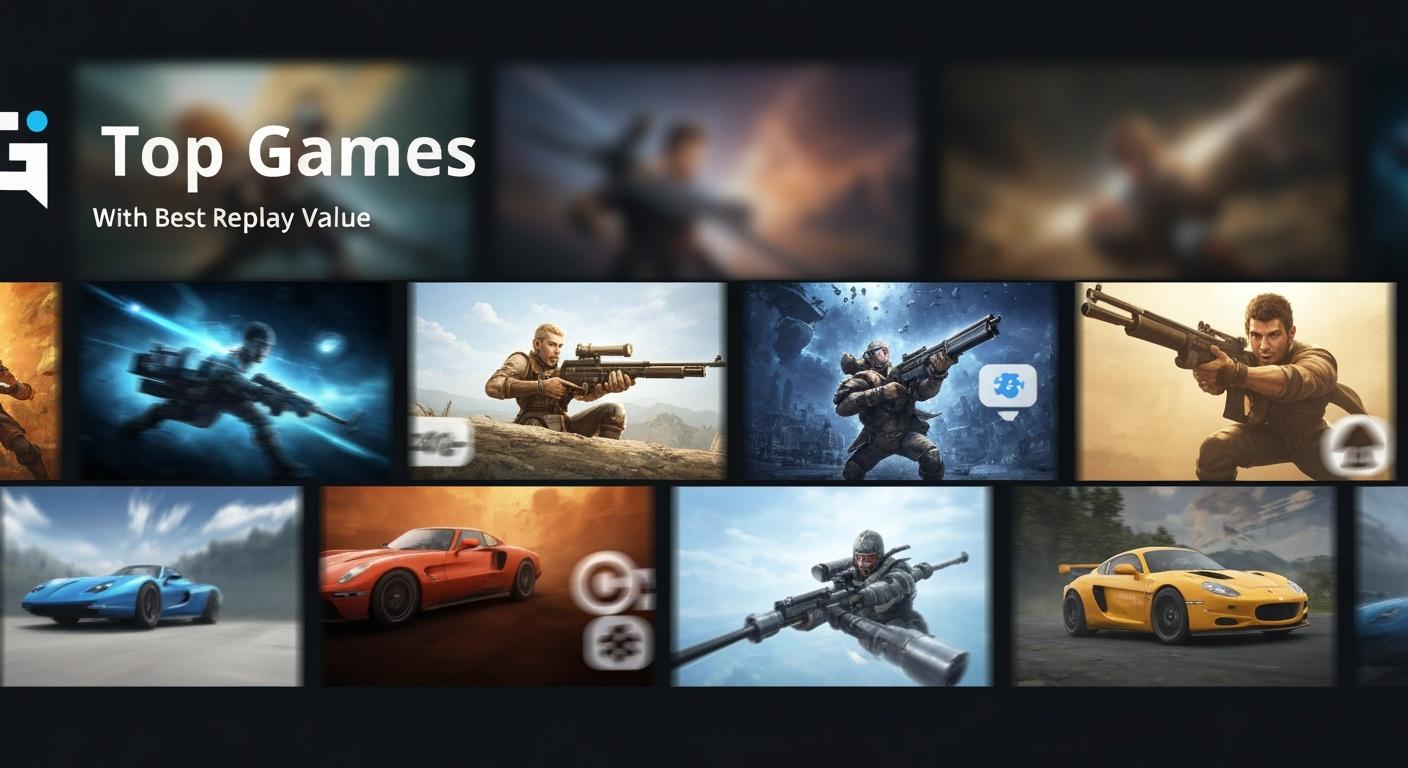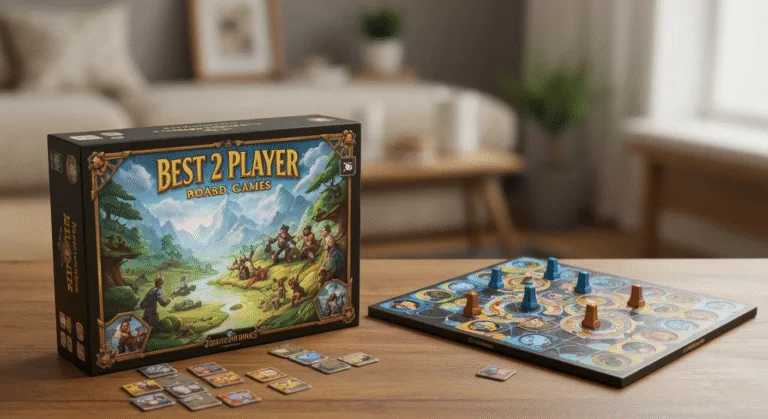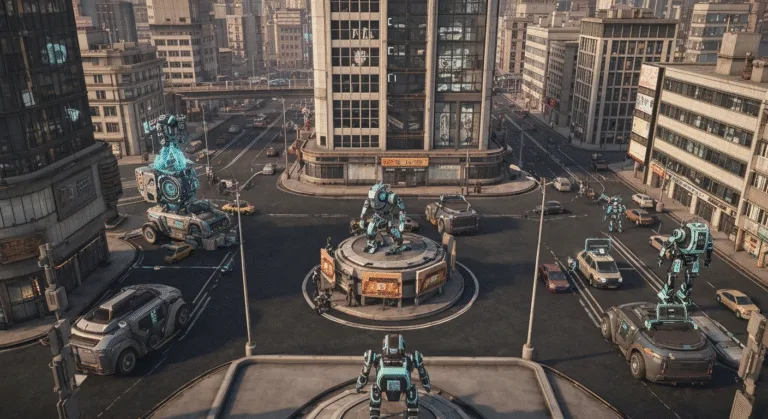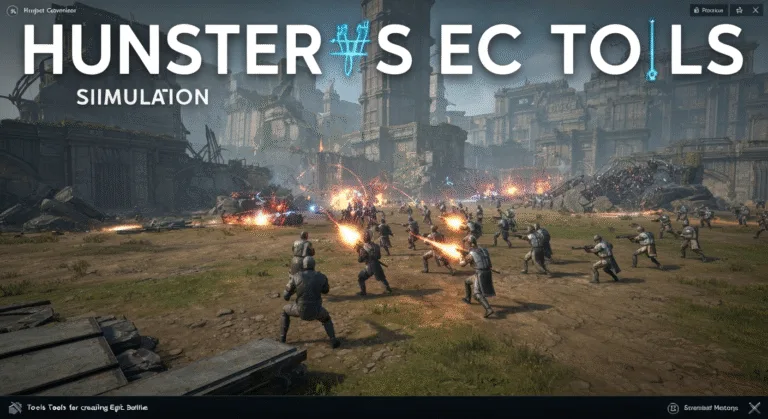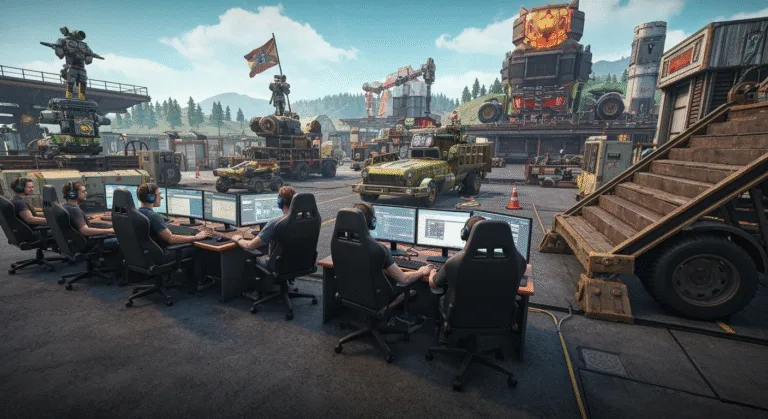Top Games with Best Replay Value: Endless Entertainment That Never Gets Old
How many times have you finished a game, only to feel that immediate void of “what now?” A staggering 70% of gamers report feeling burnt out after completing single-player campaigns, yearning for experiences that offer more than a one-and-done playthrough. What if I told you there’s a secret sauce to gaming satisfaction, an antidote to the post-game blues that keeps you coming back for more? That secret lies in top games with best replay value. These aren’t just one-hit wonders; they’re enduring sagas, dynamic sandboxes, and ever-evolving challenges that promise endless entertainment. You invest your time and money, and in return, these titles pay you back manifold, offering fresh perspectives and challenges with every subsequent session.
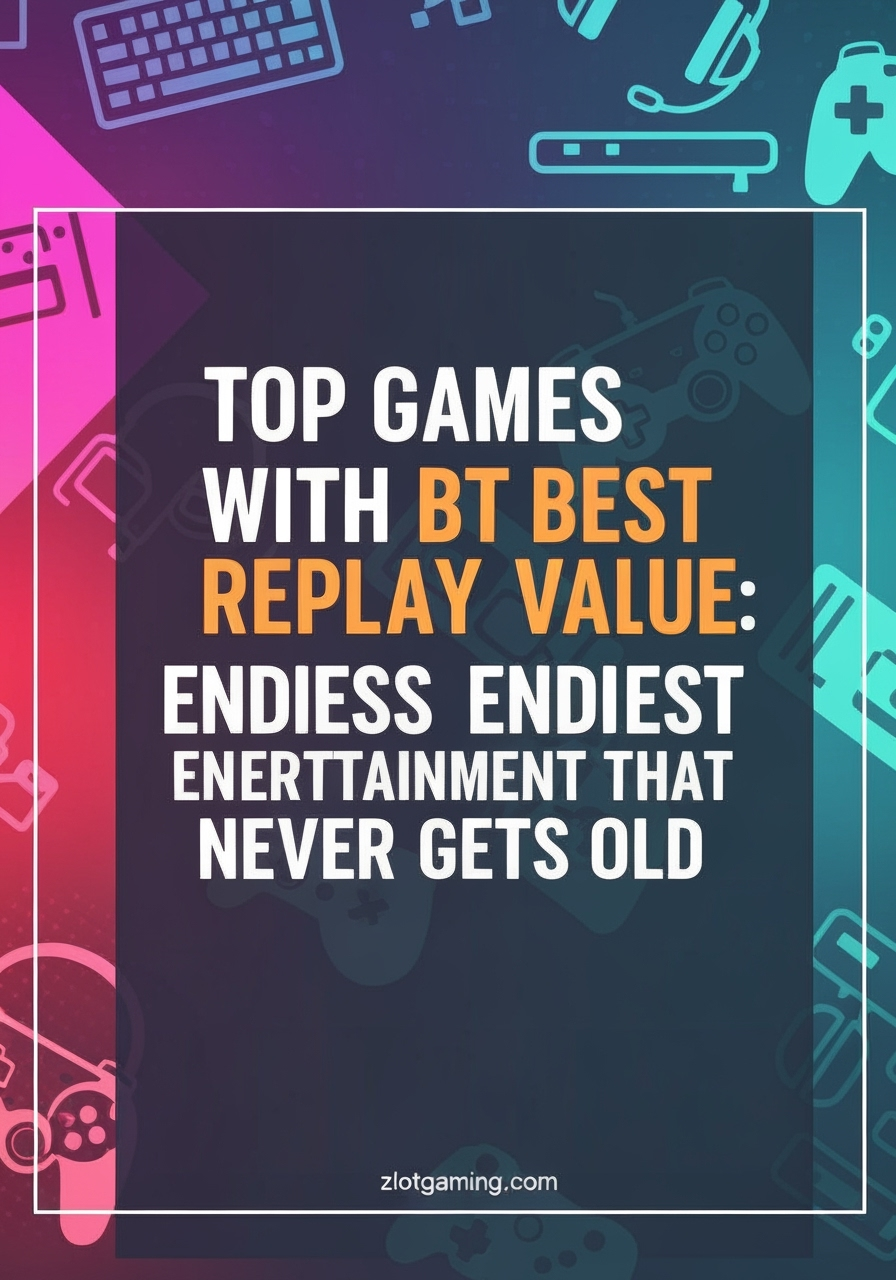
In this guide, you’ll discover the titles that consistently rank high for their ability to deliver sustained enjoyment, transforming your gaming library from a fleeting collection into a timeless treasure trove. We’ll delve into the mechanics, design philosophies, and community-driven longevity that elevate these experiences beyond the ordinary. Prepare to redefine what it means to truly conquer a game, because with these selections, the fun never really ends. Your journey into the realm of truly replayable games starts now.
Table of Contents
Why Do Some Games Offer the Best Replay Value?
Have you ever wondered what separates a forgettable experience from an unforgettable one, a game you uninstall after a week from one that stays installed for years? The answer often boils down to what gives top games with best replay value their enduring appeal. It’s not just about flashy graphics or a compelling initial story; it’s about the underlying design principles that invite you back again and again.
Consider the concept of emergent gameplay. This is where the game’s systems interact in unpredictable ways, creating unique scenarios that even the developers might not have envisioned. Think of a tactical shooter where a carefully placed grenade interacts with a crumbling wall to trap enemies, or an open-world RPG where your choices in combat dictate entirely new enemy behaviors. These dynamic interactions ensure that no two playthroughs are exactly alike, providing consistent novelty.
Another crucial factor is player agency and customization. When you have myriad ways to approach challenges, design your character, and experiment with different playstyles, the game becomes a canvas for your creativity. This could be selecting different build paths in a role-playing game, experimenting with various weapon loadouts in a first-person shooter, or even choosing entirely different factions in a strategy game. The freedom to tailor your experience amplifies your personal investment and makes each subsequent run feel fresh. This aspect is pivotal in making a game a truly replayable masterpiece.
Finally, the inclusion of procedurally generated content or robust New Game+ modes significantly boosts longevity. Whether it’s randomly generated dungeons, missions, or an entire open world, the element of surprise keeps you on your toes. New Game+ modes, often introducing harder difficulties, new enemy placements, or unique rewards, encourage you to revisit perfected strategies and embark on new challenges. These are the hallmarks of a game that fundamentally understands how to deliver the best replay value in gaming.
What Makes a Roguelike a Top Game with Best Replay Value?
When it comes to the top games with best replay value, roguelikes often sit proudly at the pinnacle. But why is this genre so inherently endlessly playable? What magic do they weave that keeps you diving back into merciless challenges over and over? Your initial reaction might be frustration at failure, but that very frustration is often the fuel for subsequent attempts.
The core loop of a roguelike is death and rebirth, but with a twist. Each run is unique, thanks to procedural generation. This means dungeon layouts, enemy placements, item drops, and even boss patterns can change dramatically from one attempt to the next. You never know exactly what challenges lie ahead, which forces you to adapt, improvise, and learn on the fly. This constant novelty ensures that every playthrough feels like a fresh puzzle to solve, effectively making every run a unique adventure, which is a hallmark of truly replayable games.
Beyond procedural generation, permanent progression elements provide motivation. While you lose most of your gear upon death, you often unlock new characters, weapons, abilities, or upgrades that persist across runs. This meta-progression gives you a tangible sense of growth, making each failure feel like a step forward rather than a complete setback. Perhaps you unlock a powerful new spell or a character with a unique starting ability, fundamentally altering your approach to the next attempt. This balance between temporary setbacks and permanent advancement is addictive and defines games with the best replay value in gaming.
Furthermore, roguelikes often boast deep, interconnected systems. You might discover synergies between different items, learn optimal build paths for specific characters, or master nuanced combat mechanics. The process of uncovering these layers of complexity and mastering the game’s intricacies is incredibly rewarding. Each death becomes a learning experience, an opportunity to refine your strategy or discover a new tactic. You’re not just playing; you’re learning, perfecting, and evolving your mastery, cementing the roguelike genre as a champion of top games with best replay value.
How Do Open-World Games Achieve Top Replay Value?
Open-world games, with their sprawling maps and countless activities, are often cited as offering the top games with best replay value, but how exactly do they manage to keep you engaged long after the main story credits roll? It’s not just about sheer size; it’s about the breadth and depth of experiences you can carve out for yourself.
The primary driver is often the sheer volume of content beyond the main questline. Think of the side missions, optional challenges, collectibles, and dynamic world events that litter these expansive environments. You might spend dozens of hours clearing bandit camps, discovering hidden lore, or simply exploring every nook and cranny of the map without ever touching the primary narrative. This freedom to choose your own adventure and set your own goals is a key ingredient in making a game a replayable masterpiece. Many players find immense satisfaction in simply existing within these meticulously crafted worlds.
Player choice and emergent narratives also play a massive role. In many open-world titles, your decisions, no matter how small, can have ripple effects on the world and its inhabitants. Perhaps you choose to align with a different faction on a subsequent playthrough, leading to entirely new mission chains and character interactions. Or maybe a random encounter in the wilderness leads to an unexpected questline. These unexpected moments and the ability to craft your unique story within the given framework greatly enhance your desire to revisit these worlds again and again. This dynamism truly elevates games to the status of top games with best replay value.
Finally, the sandbox element is crucial. Many open-world games provide you with a toolkit of abilities, weapons, and vehicles, encouraging experimentation. Want to clear an enemy encampment using stealth and silenced weapons? Go for it. Prefer to go in guns blazing with a rocket launcher? That’s an option too. The freedom to approach challenges in diverse ways, combined with robust crafting or character progression systems, means that each playthrough can feel distinctly different. You’re not just replaying the game; you’re reimagining your approach, ensuring that your investment in these sprawling digital landscapes pays off handsomely in terms of best replay value in gaming.
Which Strategic Games Offer Top Games with Best Replay Value?
When we talk about the top games with best replay value, strategic titles often come to mind. But what is it about commanding armies, building empires, or outsmarting opponents that keeps you coming back for just one more turn, one more game, or one more campaign? It’s a compelling blend of complexity, variability, and the endless pursuit of perfect execution.
At the heart of many strategic games with high replay value is the concept of diverse factions or civilizations. Think of a grand strategy game where playing as one faction feels completely different from playing as another. Each might possess unique units, technologies, economic models, or victory conditions. This inherent asymmetry encourages you to master multiple playstyles and discover new strategies, effectively multiplying the game’s content. Your initial playthrough might see you dominating through military might, while your next could focus on espionage or cultural influence, making each game a unique challenge and contributing to the feeling of a truly replayable game.
Furthermore, strategic games thrive on deep, interconnected systems. Whether it’s a complex tech tree, intricate economic management, or nuanced combat mechanics, there’s always something new to learn, optimize, or exploit. The AI’s adaptive behavior, or the unpredictability of human opponents in multiplayer, ensures that no two matches unfold identically. You’re constantly tested, forced to react to evolving circumstances, and encouraged to refine your decision-making. This intellectual challenge is a powerfully addictive force behind games with the best replay value in gaming. You’re not just following a script; you’re writing your own narrative of triumph or defeat.
The inclusion of user-generated content, modding tools, or robust scenario editors also hugely bolsters the longevity of strategic games. The community effectively becomes an extension of the development team, creating new maps, units, campaigns, and even complete overhauls that inject fresh life into the game. This constant influx of new content, combined with your desire to master every faction and every intricate system, solidifies strategy games as a prime example of top games with best replay value. The battlefield is ever-changing, and so is your pursuit of mastery.
Can Modern RPGs Be Top Games with Best Replay Value?
Many modern RPGs are celebrated for their rich narratives and immersive worlds, but can they truly be counted among the top games with best replay value? While often associated with linear storytelling, the most captivating RPGs leverage specific design choices to encourage multiple playthroughs, sometimes revealing entirely new facets of their expansive universes.
One significant factor is the emphasis on player choice and branching narratives. Unlike simpler RPGs, those with high replayability offer meaningful decisions that genuinely alter the plot, character relationships, and even the world state. Perhaps your allegiance in one playthrough leads you down a path you never knew existed in another. Or maybe a different character class opens up unique dialogue options and quest solutions. This narrative flexibility means you can experience a vastly different story simply by making alternative choices, making each journey a distinct adventure and contributing to the game being a replayable masterpiece.
Character build diversity is another massive draw. Modern RPGs often provide extensive skill trees, attribute allocations, and equipment choices that allow for a dizzying array of character archetypes. Playing as a charismatic rogue might involve sneaking and persuasion, while a hulking barbarian focuses on brute force. The desire to experiment with different class combinations, magic types, or combat styles can drive multiple new game runs. You might aim for a ‘completionist’ run on your first go, but then challenge yourself with a specific, difficult build on your second, providing endless permutations and a truly unique gaming experience each time.
Furthermore, post-game content, New Game+ modes, and even robust modding communities extend the life of these titles. New Game+ modes often introduce harder difficulties, new enemy types, or unique rewards, encouraging you to revisit your perfected character builds. When combined with community-driven content that adds new quests, companions, or even entire new areas, the initial finite nature of an RPG campaign transforms into a deep well of sustained enjoyment. These elements cement certain modern RPGs squarely within the category of top games with best replay value. They’re not just stories to be told once, but worlds to be lived in, experimented with, and ultimately, mastered in myriad ways.
What Interactive Elements Boost Replay Value in Top Games?
It’s clear that certain genres excel, but beyond broad categories, what specific interactive elements are present in top games with best replay value that specifically encourage you to return? It’s often the subtle, yet powerful design choices that foster prolonged engagement and make each session feel fresh.
One crucial element is dynamic environmental interaction. Imagine a game where your actions physically alter the landscape – collapsing bridges to block enemy paths, igniting flammable liquids to create fire traps, or manipulating elements like wind and water to your advantage. When the environment itself is a tool or a reactive entity, it opens up countless tactical possibilities, encouraging experimentation. You might discover a new way to clear a section by using the environment on your third playthrough that you never considered before. This responsiveness elevates a game beyond a static experience, making it a truly replayable game.
Another powerful driver is emergent AI behavior. When enemies adapt to your tactics, communicate with each other, or have complex routines that can be disrupted, every encounter becomes a dynamic puzzle. Instead of rote memorization, you’re constantly analyzing and reacting to an evolving threat. Perhaps in one run, a stealth approach works perfectly, but in the next, the guards patrol differently, forcing you to find a new route or engage in direct combat. This unpredictability keeps you on your toes and ensures that even familiar areas feel fresh, directly contributing to the best replay value in gaming.
Finally, systems that allow for constant experimentation and adaptation are key. This could be a flexible class system where you can respec your character on the fly, a crafting system that encourages tinkering with different item combinations, or a procedural mission generator that creates endless new objectives. The ability to constantly tweak, learn, and apply new strategies ensures that you never feel like you’ve seen everything a game has to offer. These iterative loops of discovery and mastery are what truly define a title as one of the top games with best replay value, giving you boundless opportunities to forge your unique path.
Why Are Competitive Multiplayer Games inherently Top Games with Best Replay Value?
When discussions turn to the top games with best replay value, competitive multiplayer titles are almost always at the forefront. Their very nature intrinsically fosters endless engagement, often without the need for traditional story campaigns or even significant content updates. But what exactly makes them so relentlessly compelling, drawing you back match after match, year after year?
The primary driver is the human element. Playing against other human beings introduces an unprecedented level of unpredictability and strategic depth that no AI, no matter how advanced, can fully replicate. Every opponent is different, bringing unique tactics, skill levels, and playstyles to the table. You’re constantly learning, adapting, and trying to outthink a live mind. This dynamic competition ensures that no two matches are ever truly identical, making every session feel fresh and challenging, elevating these titles into truly replayable games. The joy of victory and the sting of defeat keep you motivated to improve.
Furthermore, the concept of skill mastery and progression is a powerful hook. Whether it’s climbing a ranked ladder, perfecting your aim, mastering a character’s abilities, or coordinating complex team strategies, there’s always a tangible goal to strive for. The ability to see your own improvement over time, measured in win rates, KDRs, or leaderboard positions, is an incredibly rewarding loop. You celebrate small victories, analyze your losses, and dedicate yourself to honing your craft. This endless pursuit of perfection is a cornerstone of the best replay value in gaming.
Finally, the social aspect cannot be overstated. Playing with friends, forming teams, or joining competitive communities adds a layer of camaraderie and shared experience that few other genres can match. The bonds forged in competitive play, the shared triumphs, and the mutual struggles contribute significantly to a game’s longevity. You’re not just playing a game; you’re participating in a vibrant, evolving ecosystem of players. This combination of unpredictable human opponents, the desire for self-improvement, and strong social connections solidifies competitive multiplayer titles as arguably the top games with best replay value on the market. They’re not just games; they’re ongoing sporting events, constantly evolving and forever challenging.
Conclusion
The pursuit of top games with best replay value isn’t just about finding something to pass the time; it’s about investing in experiences that truly give back. We’ve journeyed through the dynamic worlds of roguelikes, the sprawling landscapes of open-world epics, the strategic depth of empire-builders, the narrative branching of modern RPGs, and the endless competitive arenas of multiplayer titans. Each genre, in its own unique way, offers a testament to intelligent game design that emphasizes player agency, emergent gameplay, and persistent progression.
You now understand that true replayability isn’t a mere feature; it’s a philosophy woven into the very fabric of a game, ensuring that every session offers something new to discover, master, or simply enjoy. These are the titles that defy obsolescence, earning their place in your gaming library not just for a season, but for years to come. They transform your digital collection from a stagnant shelf of finished stories into a living, breathing ecosystem of infinite possibilities.
What are your go-to titles that never get old? Which game have you replayed more times than you can count, and what keeps pulling you back? Share your personal replayable game recommendations and your reasons why in the comments below! Don’t miss out on more insights into maximizing your gaming experience – subscribe to our newsletter for exclusive tips and join our vibrant community on social media. Your next endless adventure awaits!

